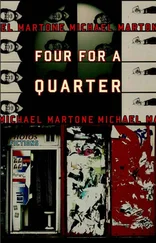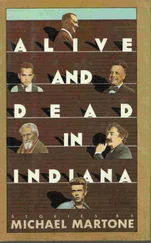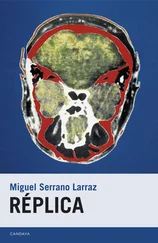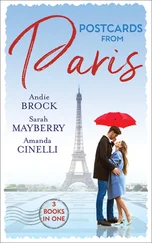We waited in the dark. A fuse had blown-the electric steam iron tipping the scale. We had fuses, not the more modern circuit breakers, in our house on Clover Lane. My father could easily replace the blown fuse. He worked for the phone company, and had been, like my grandfather, a member of the international Brotherhood of Electrical Workers-the IBEW. I have my grandfather's union buttons. They depict the brotherhood's logo-a hand made into a fist squeezing a bundle of bolting electricity. My father could have switched out the blown fuse but instead called my grandfather, who lived down the hill a dozen blocks away. Getting the call, he strapped on his tool belt. I have the tool belt too. It is a modest one with a single leather pouch equipped with a screwdriver, flashlight, needle-nose pliers, black electrician's tape, wire stripper, and wire cutter. My grandfather headed out, walked down Poinsette along the rim of Hamilton Park and up the hill on Emerson, hardly a walk at all for him. Years later, I realize why we sat in the dark waiting for my grandfather to come fix the fuse. I figure it is kind of a union thing, things electric being the purview of my grandfather, a kind of featherbedding. Even then it was a funny family eccentricity. My family took on the silly inconvenience in order to tease my grandfather's seriousness of purpose and task. But finally this was what my grandfather did his whole life: He went door-to-door bringing light, bringing power. His family could suffer a few minutes of darkness to appreciate that, passing the time by laughing at the picture of that old man wading through the pools of light cast by the street lamps, in his City Light overalls and his worn utility belt riding his hip like a gunslinger, a brand new fuse gripped fast in his fist, striding purposely to our rescue.

I
My house at 29 Country Club Hills overlooks the old Country Club of Tuscaloosa. The ninth tee and green, a short par 3 of 183 yards, is screened by a ragged hedge of pines and kudzuvined sycamores. Sitting in my metal motel chair in my driveway, I can hear the golfers yelling "fore" as the sliced ball crashes into the scrub across the street. Later I see the foursome hacking through the underbrush with their clubs, looking for the lost balls. Mowing my front yard, I'll find one or two dinged up balls buried in the long grass. I keep these discoveries in a big yellow bowl on the dining room table to give to my father when he visits to play golf each winter.
2
The couple of streets of ranch homes on the hills above the golf course once must have been the address in Tuscaloosa. Built after the war, the neighborhood is the waking reality of a fantasy conceived in the foxholes. To be able to putter over to the club by means of your own electric cart, that was the dream. Every house has a view of the fairways rolling toward the dark river in the distance. But the money of those heady days, now, has gone, jumped north over the river to paper company land growing houses instead of trees. There, there are new country clubs with their necklaces of garden homes and McMansions hugging the shores of artificial lakes. My neighborhood is worse for wear, shabby even. Its lawns, like my own lawn, are ragged with a mixed prairie of centipede and crab grasses, creepers, ivies, and vines, the whole Southern swampy ecology that stands in contrast to the groomed swath of grass across the crumbling road.
3
My neighbors ask me what I read. They have seen me sitting in my motel chair, reading. They invite me to sit with them on their enclosed porches looking out over the golf course. We drink eight ounces of Coca-Cola served in sweating glass bottles. They all tell me that Walker Percy wrote here overlooking the country club. Love in the Ruins was written while visiting friends who lived in the house in the cul-de-sac at the end of the road. The golf course in that book is our golf course, they tell me.
4
Sitting in my driveway in my motel chair, I can watch the freight engine move a short string of cars through the golf course. The treble of the diesel notches up a thump or two as it leans into the hummock by the tennis courts. The spur leads from the main line downtown through the country club over to the tire plant and the refinery on the far side of the course and was built through the fairways during the war. The country club with its rail line hazard is hard by the lock and dam on the Black Warrior River, which casts a concrete backdrop to the green expanse. Tugs with tows of coal and covered barges of cement slide behind clutches of golfers skylined and foreshortened on exposed decks of the back nine tees by the river. They take practice swings as the ships blow their horns entering the locks. Off in the distance, on the other side of the river, the municipal airport launches, each morning, flights of executive jets. The paper company and Mercedes planes take off over the golf course. A pastoral: Green rolling hills. Pools of white sand. Ponds of black water. The light glints on the steel rails. The bridges of the ships slip by, visible above the green-level levees. The white jets circle, sink through the branches of the weeping trees overhead, making their evening approaches into the setting sun.
5
In the evening, the automatic sprinklers sprout sprays of water on the tees and greens. The hiss of the irrigation mixes with the saw of the cicada and the chorus of peepers in the copses. The air is warm and close. Lightning bugs rise up out of the grass.
6
One weekend soon after moving in to my house, I sit in my driveway on my motel chair reading Love in the Ruins when a convoy of identical electric carts, bumper to bumper, jostles by. The old men are two to a cart. Each waves at me. They wear the funny hats and gloves with straps and cut-outs. It is the start of a scramble tournament. The participants disperse to all the tees to start play simultaneously instead of launching one after another at the first hole. The motors sizzle and hum as they head up the hill and drift around the corner. Here they use the public street, but down by the ninth tee, they can slide onto the network of asphalt paths built for the carts. As the string of carts trundles past, I can see through the trees out to other convoys creeping slowly onto the back nine in the distance. It takes minutes to witness this slow parade. The clubs clank on the rough roadway. I can tell the old men are anxious, ready for the contest to come. They laugh and slap the backs of their partners, doff their hats. Then they are gone, rounding the curve by the ophthalmologist's house. After awhile, an air horn sounds down by the clubhouse, signaling the start of simultaneous play. The neighbors say they once used a shotgun, its report echoing off the concrete lock and dam.
7
My house at 29 Country Club Hills is built on fill. My lawn runs downhill to fall off into a ravine where water runs when it rains and where English ivy and Virginia creeper, poison ivy and honeysuckle boil up to entwine the cyclone fence enclosing my backyard. Where my house sits must have once been air over a wider gulch. My street crosses the ravine over a culvert that drains the water out into the golf course. On the other side of the ravine, tucked behind a little redoubt, is the clutch of buildings owned by the country club. From where I sit in my metal motel chair, I can just see the end of the corrugated metal covering the pole barn where they store the golf carts. Once, on the shady road above the culvert, a snapping turtle the size of a manhole cover lounged for an afternoon. The golf carts steered cautiously around him. At night I dream of this house washing away. When it rains, it rains tropically. The old seamed gutters of the house are clogged by pine straw. Water sheets down the driveway, the street. The red dirt turns to a red slip that glazes everything with a powdery rust.
Читать дальше













